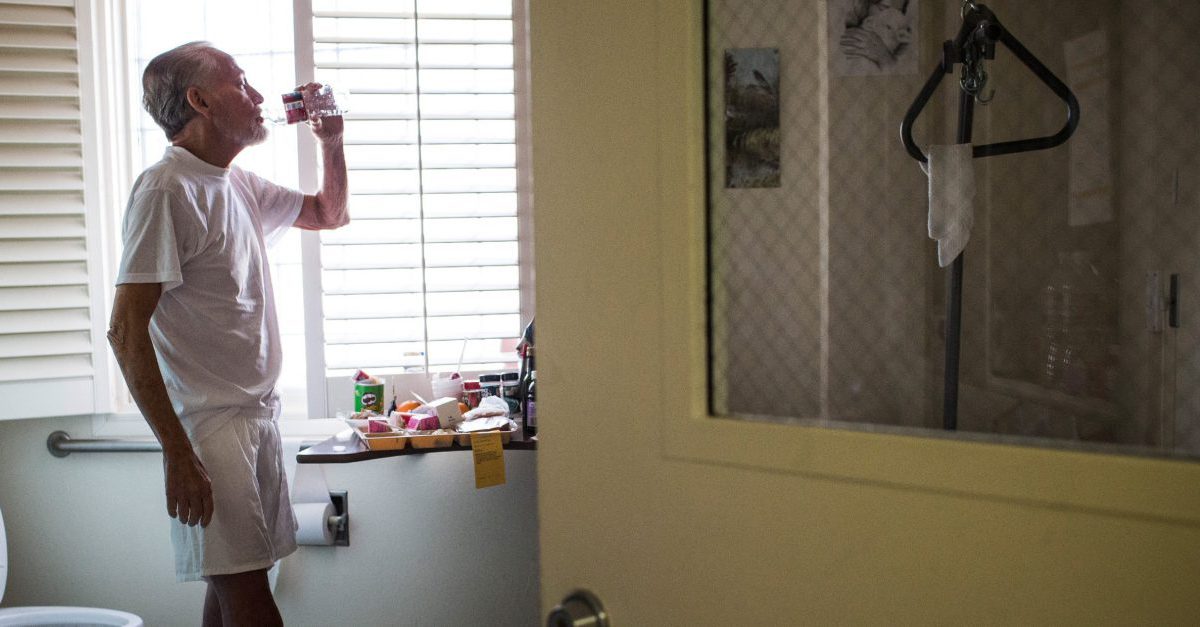Feel like you’ve been seeing more GoFundMe pages lately? You’re probably right.
Videos by Rare
Fundraising site GoFundMe tells Bloomberg that around half of all money raised on the platform is used to pay for healthcare costs. And it’s only growing as the pending repeal of the Affordable Care Act pushes up healthcare cost and injects instability into the American healthcare market.
That’s great news for sites like GoFundMe, YouCaring and other personal fundraising platforms that make money from campaigns posted by Americans who can’t pay for their care.
RELATED: New Miss USA is getting criticized for comments about health care in America
Analysis conducted by NerdWallet found that GoFundMe had raised some $2 billion on the platform in 2015. Of that amount, $930 million was related to healthcare costs.
GoFundMe hit the $3 billion mark in October 2016, but would not provide updated figures for healthcare campaigns. This year, competitor YouCaring acquired GiveForward, a third fundraising site. For GiveForward, healthcare campaigns were a whopping 70 percent of campaigns on the site; they say GiveForward campaigns raised $200 million before they were bought out.
At the time of the acquisition, CEO of YouCaring Dan Saper acknowledged rising healthcare costs and said his site’s mission was about “relieving stress.”
With health care costs continuing to rise for consumers, building a platform that can help relieve that stress is critically important to us. The GiveForward brand and what it stands for couldn’t be more aligned with who we are and what we do here.
Facebook, hoping to cut out the middleman, has built a tool to let Americans fundraise via their Facebook pages, instead of sharing a GoFundMe or YouCaring link. They, like fundraising pages, have realized that the financial insecurity of Americans — with health and wellbeing at stake — could mean millions in revenue.
These personal fundraising pages make money in similar ways. Most charge a percentage of each donation, which may or may not include a payment processing fee, and a separate charge per transaction.
GoFundMe, for example, gets 5 percent of every donation, takes another 2.9 percent for payment processing, and charges a $0.30 transaction fee. YouCaring takes just 2.9 percent of every donation and a $0.30 fee per transaction. Facebook lops off 6.9 percent of every donation as well as a $0.30 per-transaction fee.
That’s big business even if a campaign never really takes off, which most do not.
The same NerdWallet study found that just 11 percent of fundraising campaigns ever meet their goals; most make about 40 percent. The study found that the most well-networked and shareable campaigns, coupled with the depth of the crisis, lead to the best outcomes.
RELATED: This woman got stuck with a hefty medical bill that her insurance company won’t pay — here’s why
YouCaring CEO Dan Saper is bullish about the future of crowdfunding medical expenses, as American healthcare now costs over $10,000 per person per year and annual growth in healthcare costs is expected to outpace the economy for years to come.
He told Bloomberg that the medical crowdfunding industry “represents just a fraction of the hundreds of billions of dollars Americans pay annually out of pocket for health care” and that his business is “highly, highly scalable and has a ton of runway.”
“The growth rate of the industry is showing that this can absolutely be an impactful safety net for a lot of individuals and communities to help each other,” said Saper.



